This document summarizes a presentation on advanced concepts in DataWeave 2.0 including recursion, pattern matching, and examples of combining these techniques. It discusses using recursion to iterate through nested data structures by matching on types and mapping functions. Two examples are provided of writing utility functions - one to apply a function to all values, and one to apply a function to all keys. The functions use recursion and pattern matching to navigate nested objects and arrays. Additional resources on these topics are also referenced.
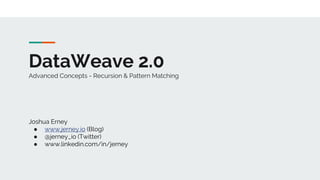




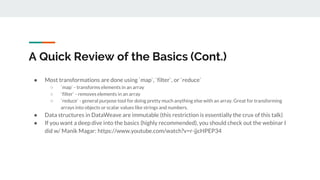
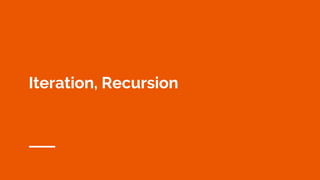


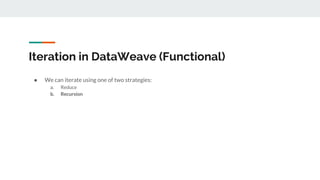
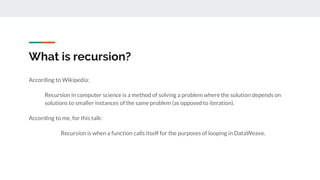
![Recursion Example
%dw 2.0
output application/json
var range = 1 to 10
fun recurSum(arr, total=0) =
if not isEmpty(arr)
recurSum(arr[1 to -1], total + arr[0])
else
total
---
recurSum(range) // 1 + 2 + 3 + …, 10 = 45](https://image.slidesharecdn.com/dataweave2-190324020204/85/Data-weave-2-0-advanced-recursion-pattern-matching-12-320.jpg)
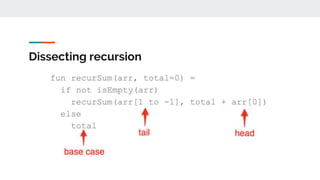



![Tail call examples
Tail Call (recurSum is the last call in the function
body)
fun recurSum(arr, total=0) =
if not isEmpty(arr)
recurSum(arr[1 to -1], total +
arr[0])
else
total
Not a Tail Call (function still must add the result of
recurSum to arr[0])
fun recurSum(arr) =
if not isEmpty(arr)
arr[0] + recurSum(arr[1 to -1])
else
0](https://image.slidesharecdn.com/dataweave2-190324020204/85/Data-weave-2-0-advanced-recursion-pattern-matching-17-320.jpg)
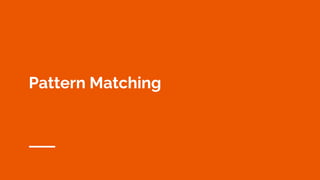
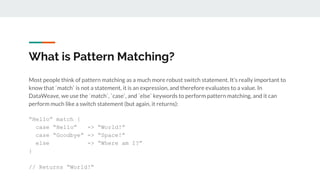



![Matching on Type
We can also match on type:
[1,2,3] match {
case is Array -> “We have an array”
case is Object -> “We have an object”
else -> “We have neither an array or object”
}
// Returns “We have an array”](https://image.slidesharecdn.com/dataweave2-190324020204/85/Data-weave-2-0-advanced-recursion-pattern-matching-23-320.jpg)















